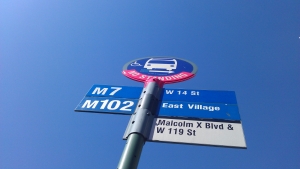 Any time a prospective client walks into to my office with a personal injury case that occurred on public municipal property there are certain questions that must be asked in order to appropriately analyze the client’s claim. One of the most challenging aspects of suing a municipal defendant or one of its quasi-public municipal corporations in the State of New York is drafting and subsequently serving a timely notice on the appropriate municipal defendant. Pursuant to New York General Municipal Law § 50(e) any person that intends to sue the City must file a Notice of Claim within 90 days after the claim arises with the appropriate department. This statute includes the City of New York along with its “Mayoral Agencies” such as NYPD, FDNY, DOT, DEP Department of Finance, New York City Community Colleges, Department of Corrections, etc. If you intend to sue the City of New York or one of its “Mayoral Agencies” you must file three original Notice of Claim forms with the City of New York Comptroller.
Any time a prospective client walks into to my office with a personal injury case that occurred on public municipal property there are certain questions that must be asked in order to appropriately analyze the client’s claim. One of the most challenging aspects of suing a municipal defendant or one of its quasi-public municipal corporations in the State of New York is drafting and subsequently serving a timely notice on the appropriate municipal defendant. Pursuant to New York General Municipal Law § 50(e) any person that intends to sue the City must file a Notice of Claim within 90 days after the claim arises with the appropriate department. This statute includes the City of New York along with its “Mayoral Agencies” such as NYPD, FDNY, DOT, DEP Department of Finance, New York City Community Colleges, Department of Corrections, etc. If you intend to sue the City of New York or one of its “Mayoral Agencies” you must file three original Notice of Claim forms with the City of New York Comptroller.
GML § 50(e) also requires you to file a Notice of Claim if you intend to sue any “Non-Mayoral Agency”, this includes governmental agencies such as NYC Department of Education, NYC Health and Hospitals Corporation, NYCTA, MTA, New York City Housing Authority, etc. Again, you must file three original Notice of Claims, but when suing a “Non-Mayoral Agency” the Notice of Claim must be served directly with the agency. Things can get tricky when you are attempting to sue a wholly owned subsidiary of a “Non-Mayoral Agency” such as MTA Bus Company. Though, MTA Bus Company is not technically a municipal agency and therefore not covered by the notice provision set forth in General Municipal Law § 50(e), they are a subsidiary of the MTA which is a governmental agency and are afforded a separate Notice provision set forth in Pub. Auth. Law § 1266(5). Pursuant to Pub. Auth. Law § 1266(5) all subsidiaries of governmental agencies that were created by Pub. Auth. Law § 1266(5) are afforded a 30 day notice provision which means that a prospective plaintiff must serve a Notice of Claim with the subsidiary 30 days prior to filing a Summons and Complaint. An attorney must be aware of these differences in the noticing provisions and know the appropriate place to serve their Notice of Claim in order to preserve the client’s lawsuit against the appropriate Municipality.
If it is determined that the prospective client has a personal injury action against the State of New York or one of its governmental agencies such as DMV, SUNY, City University (4-year colleges), etc. then pursuant to Section 10 of the Court of Claims Action of New York a prospective plaintiff must either file their lawsuit or a Notice of Intent to Sue within 90 days of the accrual of the injury. A Notice of Intent to Sue is essentially the same as a Notice of Claim and serves as written notice to the State of New York that the plaintiff intends on filing a lawsuit in the Court of Claims within the appropriate statute of limitations. Failure to file timely notice with the Court of Claims can result in the dismissal of the plaintiff’s claim.
It is extremely important when interviewing a prospective client for the first time to question them extensively about the exact time and location of the accident, who may have owned the property, what municipalities may be involved and what municipalities are located in the area at the time of the accident. Afterward, if the claim is still timely it is the job of the attorney to diligently research the incident and contact the appropriate departments in order to determine which municipality is responsible for the client’s injury. For example, a New York City bus could operated by NYCTA, MTA, MTA Bus Company or MABSTOA and it is the job of the plaintiff’s attorney to determine which agency is liable and then file written notice within the appropriate time frame.
 Bronx Injury Lawyers Blog
Bronx Injury Lawyers Blog



